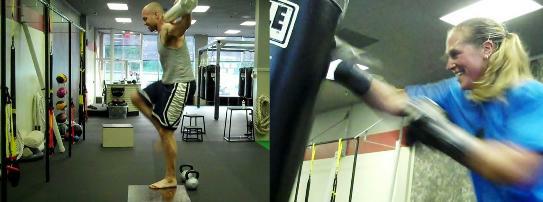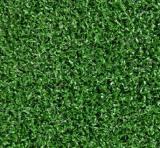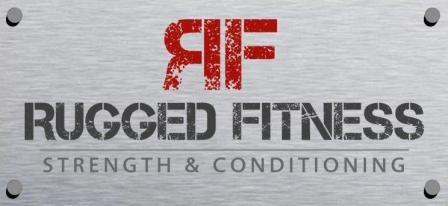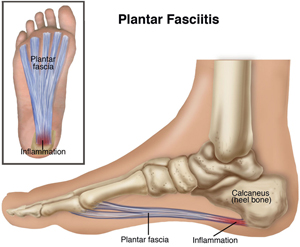Plantar Fasciitis: The Ultimate Thorn in Your Paw
Plantar Fasciitis has arguably become one of the most reported and chronic pains that develop in both athletes and non-athletes alike. This article will aim to both help you understand plantar fasciitis and some easy at home treatments that will help relieve the pain.
What is Plantar Fasciitis?
On the bottom of all of our feet, we have a fibrous sheet
(plantar fascia) that starts at our heel and fans out to the
bottom of the arch of our feet just below our toes. This
fibrous sheath main function is to assist in maintaining
the stability of the foot and securing the arch that runs
along the inside of your foot (longitudinal arch). The
reason we develop plantar fasciitis is due to the
development of tension within the fascia. During rest and
weight bearing the tension is distributed evenly. But, as
we run and walk that tension is shifted to the balls of our
feet, causing an increase in tension to approximately twice
our body weight. The tell-tale sign of plantar fasciitis is
a sharp increase in pain when you first step foot out of
bed in the morning. The reason the pain is so intense in
the morning is due to the fact when we sleep, our fascia is shorten and tightened and when we first step out of bed in the morning, we quickly force the fascia to extend quickly and while weight bearing.
Care and Treatment
The best way care and treatment of an injury all comes down to prevention, the population that will most likely suffer from plantar fasciitis are people who tend to have higher arches or very low or collapsed arches. With that being said, I cannot stress enough on proper shoe selection, just because they are the newest Nike’s it does not mean they belong on your feet! The best advice I can give is to have your feet assessed by true professionals either podiatrist or employees of running stores (I prefer Fleet Feet) and not by a salesman at big name athletic apparel stores. Just the small adjustment of putting the right shoes on your feet will make all the difference. If you have the proper shoes or need immediate relief, the following at home treatments may help alleviate some of the aches and pains.
Golf Ball Rolls: Using a golf ball (or marble) gently roll the ball between your heel and the balls of your feet. This can be done for a few minutes, several times throughout the day. If you have poor balance, I suggest doing this exercise seated.
Ice Massage: The traditional ice bag is somewhat ineffective for this type of injury. The ice bottle or ice cups have been proven to be most effective. For the ice bottle, any standard 12 ounce Poland Spring bottle will be ideal. Fill the bottle all the way and freeze it until its completely frozen. Take the bottle and roll it between your heel and the balls of your feet for approximately 9 Minutes. For an ice cup massage, using a half filled paper cup, freeze the water until frozen, unravel the top half so the ice is just coming out of the top of the cup and start working small circles up and down your foot for approximately 9-12 minutes.
Stretch: The benefits of stretching are potentially limitless and are often neglected by everyone until it’s often too late. Stretching of calf muscles plays a crucial role in the prevention of plantar fasciitis. Spending time throughout your day to stretch not just your calf, but your whole body will yield great results from decreases in aches in pains to sleeping more soundly at night.
As a general note, this article is meant to help inform the reader on the etiology and some treatment options of plantar fasciitis. It is meant in no way to diagnose any form of injury or disease. If pain persists or gets increasingly worst, it is best to consult a physician as soon possible.
This article is property of Rugged Fitness and may not be reprinted or distributed without the written permission of the author. Requests for such permission can be sent to info@areyourugged.com. The content of this article is for informational purposes only and is not intended to replace or substitute the advice or treatment of a qualified medical professional. It is the responsibility of all users of this website to obtain proper medical clearance before engaging in an exercise program or any of the activities described in this website. Rugged Fitness is not responsible for any loss or damage suffered by the use or misuse of any information or content contained in this website.




